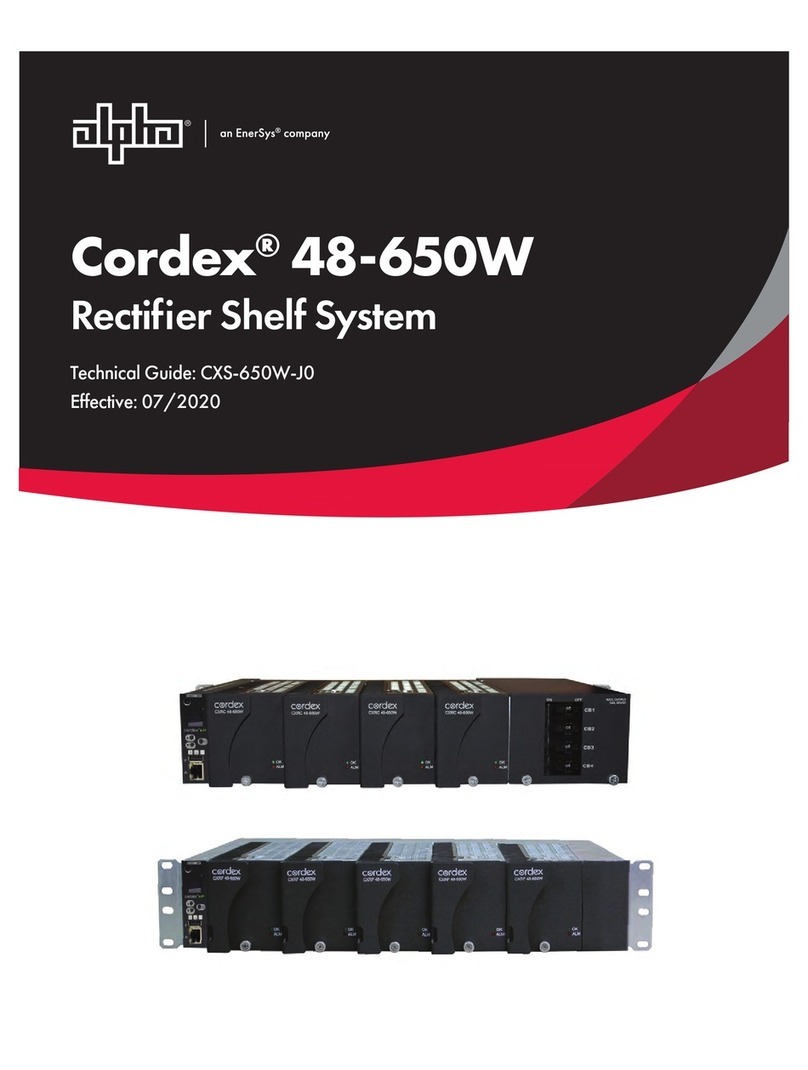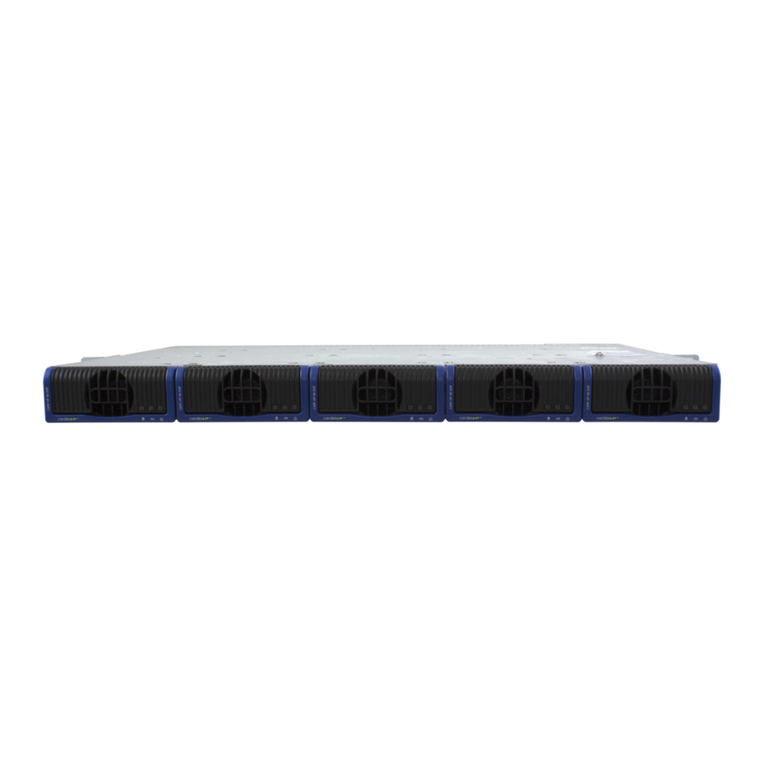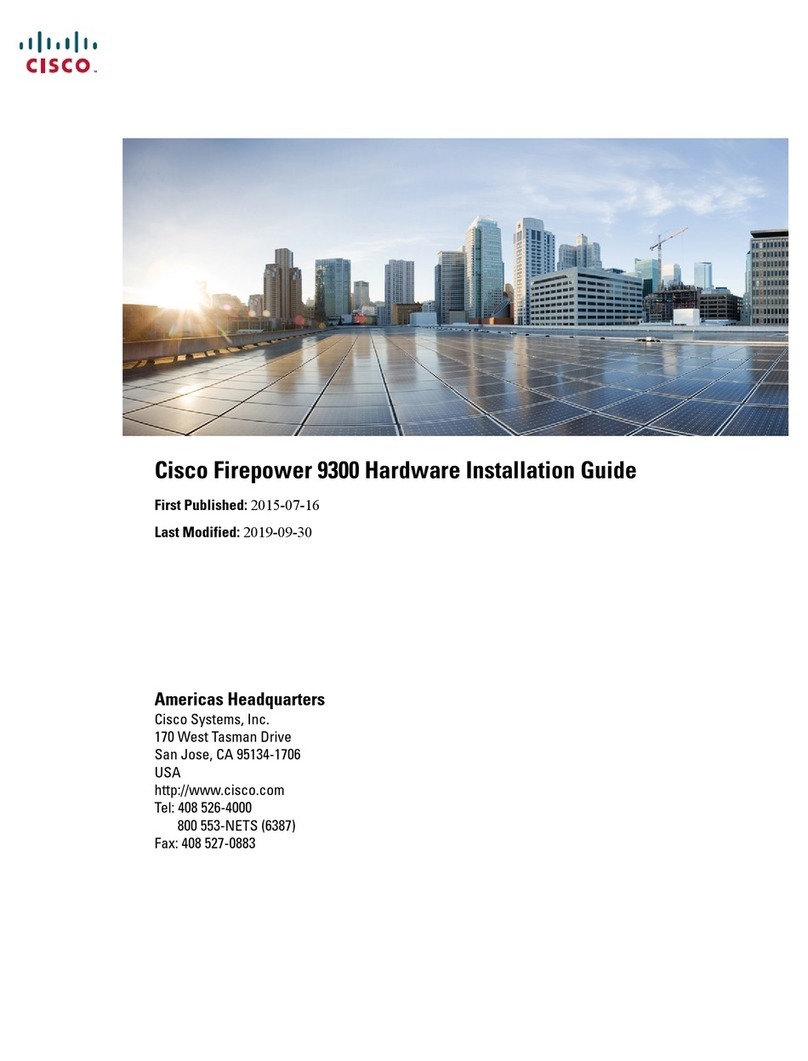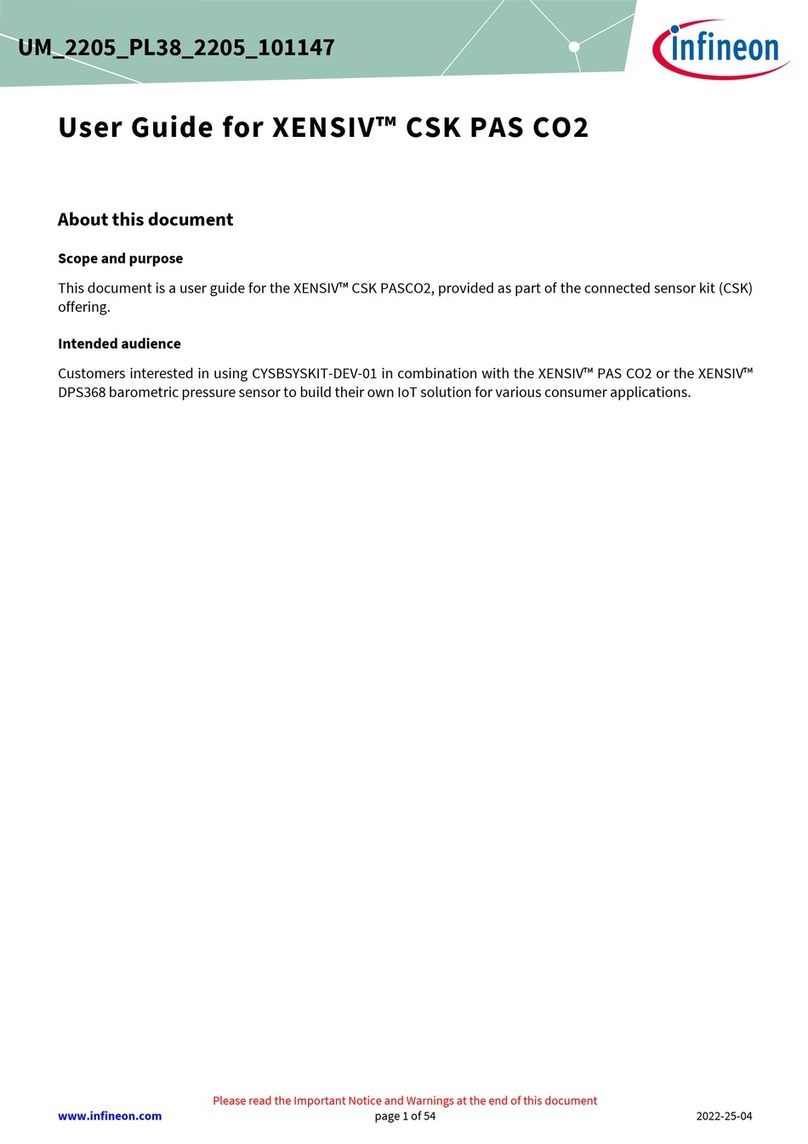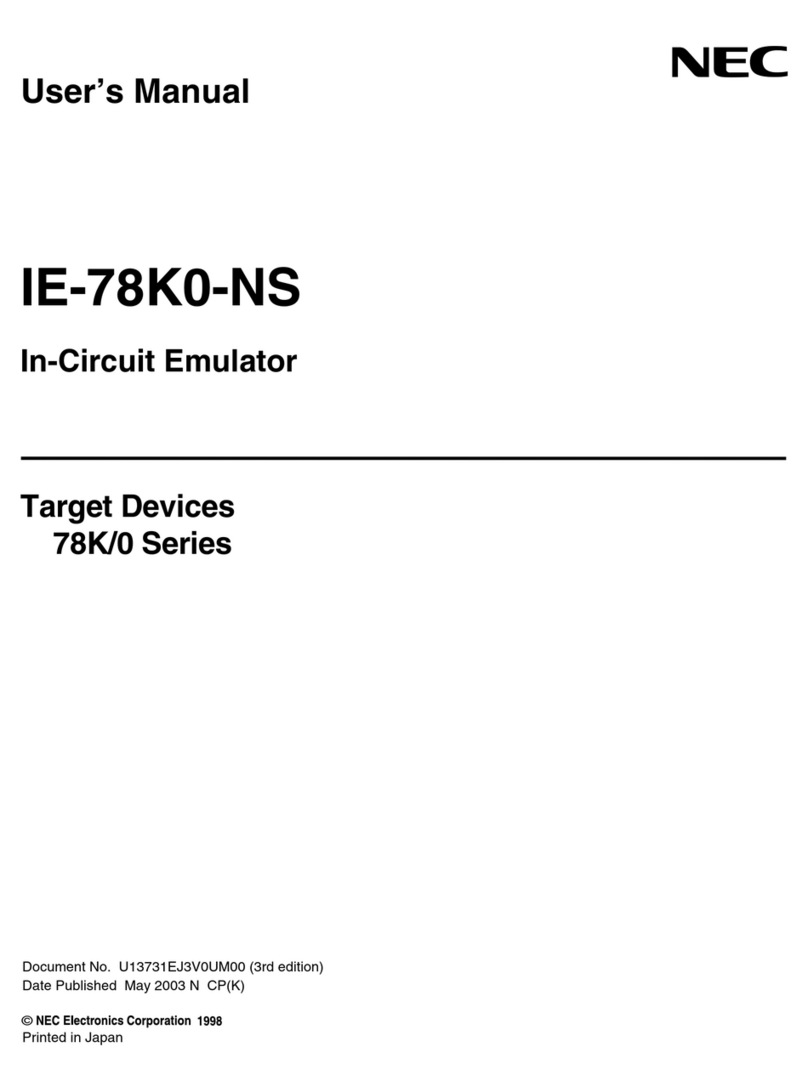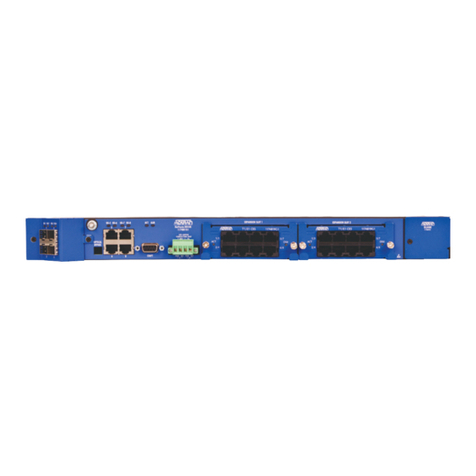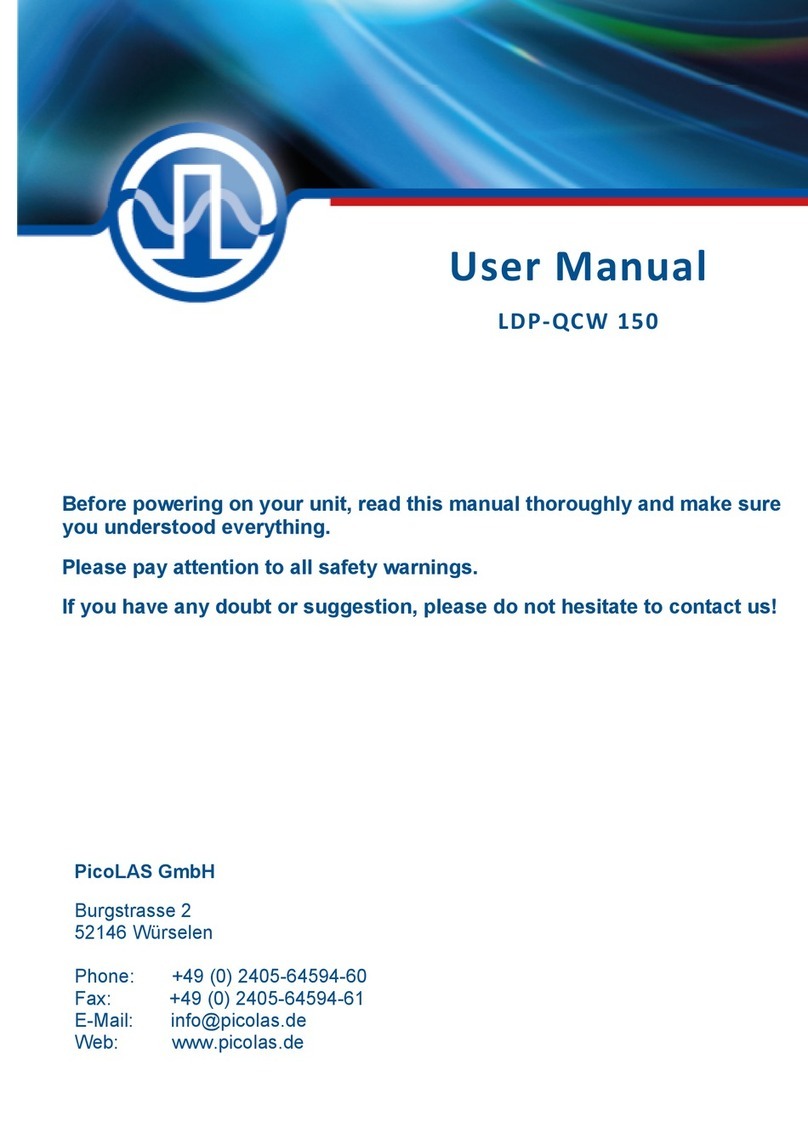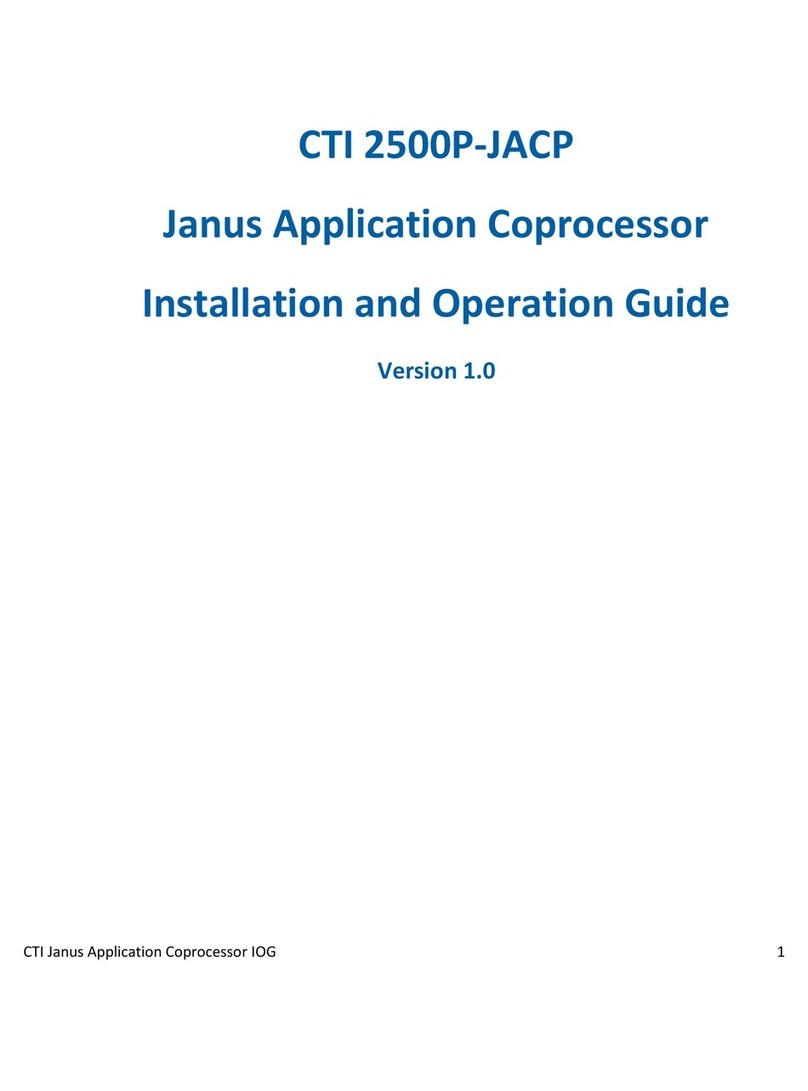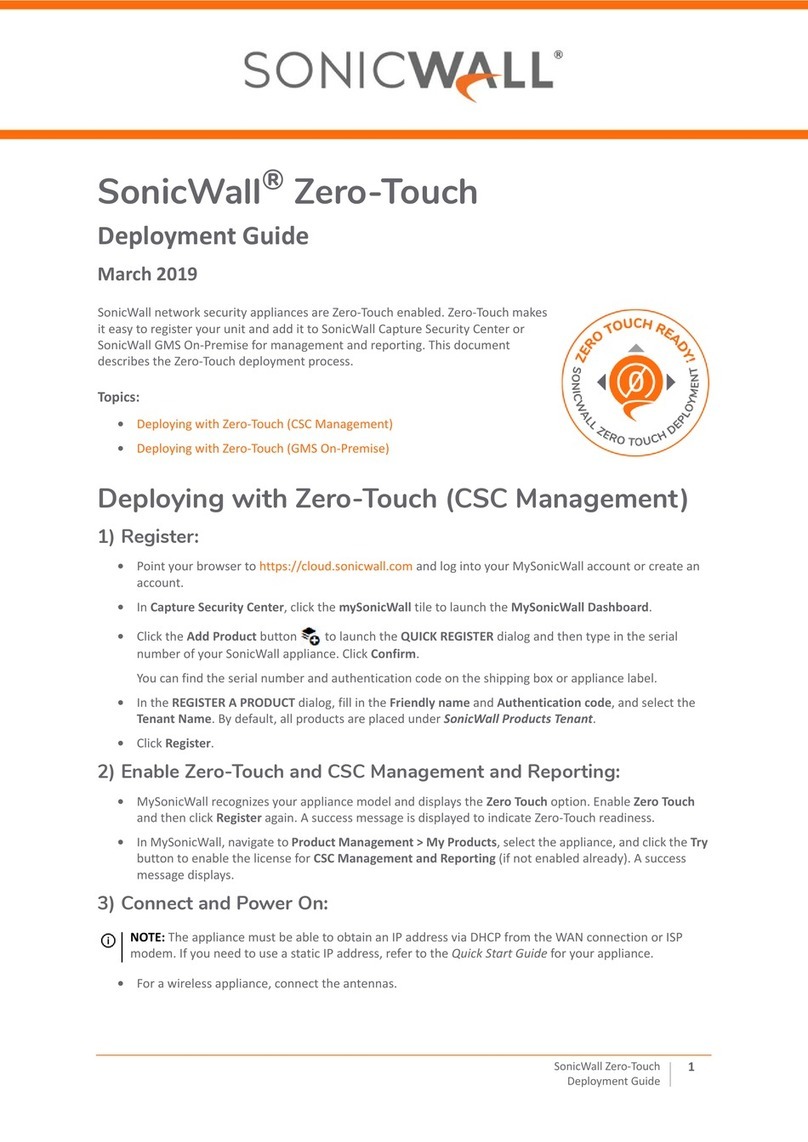EnerSys Alpha GMT 125 Series User manual

GMT 125 Series™- 15A/15B
1RU Fuse Panel For Telecom Broadband
Technical Manual
Effective: January 2020

2C048-783-30 R01, Rev. B (01/2020)
The following sections contain important safety information that must be followed during the installation and maintenance
of the equipment and batteries. Read all of the instructions before installing or operating the equipment, and save this
manual for future reference.
There may be multiple warnings associated with the call out. Example:
ATTENTION provides specic regulatory/code requirements that may aect the placement of equipment and /or
installation procedures.
ATTENTION:
NOTICE provides additional information to help complete a specic task or procedure.
NOTICE:
ELECTRICAL HAZARD WARNING provides electrical safety information to PREVENT INJURY OR DEATH
to the technician or user.
WARNING! ELECTRICAL HAZARD
FUMES HAZARD WARNING provides fumes safety information to PREVENT INJURY OR DEATH to the
technician or user.
WARNING! FUMES HAZARD
FIRE HAZARD WARNING provides ammability safety information to PREVENT INJURY OR DEATH to the
technician or user.
WARNING! FIRE HAZARD
This WARNING provides safety information for both Electrical AND Fire Hazards
WARNING! ELECTRICAL & FIRE HAZARD
CAUTION provides safety information intended to PREVENT DAMAGE to material or equipment.
CAUTION!
GENERAL HAZARD WARNING provides safety information to PREVENT INJURY OR DEATH to the
technician or user.
WARNING! GENERAL HAZARD
Safety Notes
Alpha Technologies Services, Inc. considers customer safety and satisfaction its most important priority. To reduce the
risk of injury or death and to ensure continual safe operation of this product, certain information is presented dierently in
this manual. Alpha®tries to adhere to ANSI Z535 and encourages special attention and care to information presented in
the following manner:

3C048-783-30 R01, Rev. B (01/2020)
GMT 125 Series™- 15A/15B
1RU Fuse Panel For Telecom Broadband
Technical Manual
C048-783-30 R01, Rev. B
Eective: January 2020
© 2020 by Alpha Technologies Services, Inc.
Disclaimer
Images contained in this manual are for illustrative purposes only. These images may not match your installation. Operator
is cautioned to review the drawings and illustrations contained in this manual before proceeding. If there are questions
regarding the safe operation of this powering system, please contact Alpha Technologies Services, Inc. or your nearest
Alpha representative.
Alpha® shall not be held liable for any damage or injury involving its enclosures, power supplies, generators, batteries or
other hardware if used or operated in any manner or subject to any condition not consistent with its intended purpose or is
installed or operated in an unapproved manner or improperly maintained.
Contact Information
Sales information and customer service in USA
(7AM to 5PM, Pacic Time): 1 800 322 5742
Complete Technical Support in USA
(7AM to 5PM, Pacic Time or 24/7 emergency support): 1 800 863 3364
Sales information and Technical Support in Canada: 1 888 462 7487
Website: www.alpha.com

4C048-783-30 R01, Rev. B (01/2020)
Contents
1.0 Purpose and Applicability � � � � � � � � � � � � � � � � � � � � � � � � � � � � � � � � � � � � � � � � � � � � � � � � � � � � � � 5
1�1 Product Model � � � � � � � � � � � � � � � � � � � � � � � � � � � � � � � � � � � � � � � � � � � � � � � � � � � � � � � � � � � � � � � � � � � � � � � � � 5
2.0 Theory of Operation � � � � � � � � � � � � � � � � � � � � � � � � � � � � � � � � � � � � � � � � � � � � � � � � � � � � � � � � � � � 5
2�1 Introduction� � � � � � � � � � � � � � � � � � � � � � � � � � � � � � � � � � � � � � � � � � � � � � � � � � � � � � � � � � � � � � � � � � � � � � � � � � � � 5
2�1�1 GMT 125 - 15/15 � � � � � � � � � � � � � � � � � � � � � � � � � � � � � � � � � � � � � � � � � � � � � � � � � � � � � � � � � � � � � � � � � � � 5
2�2 Features � � � � � � � � � � � � � � � � � � � � � � � � � � � � � � � � � � � � � � � � � � � � � � � � � � � � � � � � � � � � � � � � � � � � � � � � � � � � � � 5
3.0 Unpacking and Inspection � � � � � � � � � � � � � � � � � � � � � � � � � � � � � � � � � � � � � � � � � � � � � � � � � � � � � 6
3�1 Package Contents � � � � � � � � � � � � � � � � � � � � � � � � � � � � � � � � � � � � � � � � � � � � � � � � � � � � � � � � � � � � � � � � � � � � � � 6
4.0 Installation � � � � � � � � � � � � � � � � � � � � � � � � � � � � � � � � � � � � � � � � � � � � � � � � � � � � � � � � � � � � � � � � � � � � 6
4�1 Installation Preparation� � � � � � � � � � � � � � � � � � � � � � � � � � � � � � � � � � � � � � � � � � � � � � � � � � � � � � � � � � � � � � � � � � � 6
4�1�1 Elevated Operating Ambient Temperature � � � � � � � � � � � � � � � � � � � � � � � � � � � � � � � � � � � � � � � � � � � � � � � � 6
4�1�2 Reduced Air Flow� � � � � � � � � � � � � � � � � � � � � � � � � � � � � � � � � � � � � � � � � � � � � � � � � � � � � � � � � � � � � � � � � � � 6
4�1�3 Mechanical Loading� � � � � � � � � � � � � � � � � � � � � � � � � � � � � � � � � � � � � � � � � � � � � � � � � � � � � � � � � � � � � � � � � 6
4�1�4 Circuit Overloading � � � � � � � � � � � � � � � � � � � � � � � � � � � � � � � � � � � � � � � � � � � � � � � � � � � � � � � � � � � � � � � � � 6
4�1�5 Reliable Earthing � � � � � � � � � � � � � � � � � � � � � � � � � � � � � � � � � � � � � � � � � � � � � � � � � � � � � � � � � � � � � � � � � � � 6
4�1�6 Disconnect Device � � � � � � � � � � � � � � � � � � � � � � � � � � � � � � � � � � � � � � � � � � � � � � � � � � � � � � � � � � � � � � � � � � 6
4�2 Mounting� � � � � � � � � � � � � � � � � � � � � � � � � � � � � � � � � � � � � � � � � � � � � � � � � � � � � � � � � � � � � � � � � � � � � � � � � � � � � � 7
4�2�1 Lacing Bar (Connectorized Output Models Only) � � � � � � � � � � � � � � � � � � � � � � � � � � � � � � � � � � � � � � � � � � 7
4�2�2 Optional Rear Rack Support Kit
(C016-750-278-10 Kit; Connectorized Output Models Only)� � � � � � � � � � � � � � � � � � � � � � � � � � � � � � � � � � � � � � � 8
4�3 Chassis Ground � � � � � � � � � � � � � � � � � � � � � � � � � � � � � � � � � � � � � � � � � � � � � � � � � � � � � � � � � � � � � � � � � � � � � � � � 9
4�4 Input Connections� � � � � � � � � � � � � � � � � � � � � � � � � � � � � � � � � � � � � � � � � � � � � � � � � � � � � � � � � � � � � � � � � � � � � � 10
4�5 Output Connections � � � � � � � � � � � � � � � � � � � � � � � � � � � � � � � � � � � � � � � � � � � � � � � � � � � � � � � � � � � � � � � � � � � � 11
4�5�1 Terminal Block Output Versions � � � � � � � � � � � � � � � � � � � � � � � � � � � � � � � � � � � � � � � � � � � � � � � � � � � � � � � 11
4�5�2 Connectorized Output Versions � � � � � � � � � � � � � � � � � � � � � � � � � � � � � � � � � � � � � � � � � � � � � � � � � � � � � � � 12
4�6 Installing Fuses� � � � � � � � � � � � � � � � � � � � � � � � � � � � � � � � � � � � � � � � � � � � � � � � � � � � � � � � � � � � � � � � � � � � � � � � 12
4�7 Alarm Installation � � � � � � � � � � � � � � � � � � � � � � � � � � � � � � � � � � � � � � � � � � � � � � � � � � � � � � � � � � � � � � � � � � � � � � 12
4�8 Installing the Network Cable
(C016-2102-10 and C016-2106-10 Models Only) � � � � � � � � � � � � � � � � � � � � � � � � � � � � � � � � � � � � � � � � � � � � � � � � � 13
4�9 Installation Checklist� � � � � � � � � � � � � � � � � � � � � � � � � � � � � � � � � � � � � � � � � � � � � � � � � � � � � � � � � � � � � � � � � � � � 13
5.0 Operation� � � � � � � � � � � � � � � � � � � � � � � � � � � � � � � � � � � � � � � � � � � � � � � � � � � � � � � � � � � � � � � � � � � � � 14
5�1 Meter Module � � � � � � � � � � � � � � � � � � � � � � � � � � � � � � � � � � � � � � � � � � � � � � � � � � � � � � � � � � � � � � � � � � � � � � � � � 14
5�2 Review System Status via the Embedded Web Server � � � � � � � � � � � � � � � � � � � � � � � � � � � � � � � � � � � � � � � � � 14
5�2�1 Default Static Network Settings � � � � � � � � � � � � � � � � � � � � � � � � � � � � � � � � � � � � � � � � � � � � � � � � � � � � � � � 14
5�2�2 Real-time Status � � � � � � � � � � � � � � � � � � � � � � � � � � � � � � � � � � � � � � � � � � � � � � � � � � � � � � � � � � � � � � � � � � 15
5�2�3 Administration � � � � � � � � � � � � � � � � � � � � � � � � � � � � � � � � � � � � � � � � � � � � � � � � � � � � � � � � � � � � � � � � � � � � 15
6.0 Product Specications � � � � � � � � � � � � � � � � � � � � � � � � � � � � � � � � � � � � � � � � � � � � � � � � � � � � � � � � 17
Appendix A: Mechanical Drawings . . . . . . . . . . . . . . . . . . . . . . . . . . . . . . . . . . . . . . . . . 18
Appendix B: Accessories . . . . . . . . . . . . . . . . . . . . . . . . . . . . . . . . . . . . . . . . . . . . . . . . . 21
Appendix C: Supported Lugs for Termination . . . . . . . . . . . . . . . . . . . . . . . . . . . . . . . . 21
Appendix D: Supported Fuses. . . . . . . . . . . . . . . . . . . . . . . . . . . . . . . . . . . . . . . . . . . . . 21
Appendix E: Output Connections . . . . . . . . . . . . . . . . . . . . . . . . . . . . . . . . . . . . . . . . . . 22
E�1 Output Connector Cable Whips (For Connectorized Models Only) � � � � � � � � � � � � � � � � � � � � � � � � � � � � � � � � 22
E�2 Output Terminal Connections (For Terminal Block Models Only)� � � � � � � � � � � � � � � � � � � � � � � � � � � � � � � � � � 22

5C048-783-30 R01, Rev. B (01/2020)
1.01.0 Purpose and ApplicabilityPurpose and Applicability
The purpose of this document is to detail the installation and
operation instructions for the GMT 125 -15/15 Fuse Panel�
1.11.1 Product ModelProduct Model
This document applies to the following models of the Alpha
GMT 125 - 15/15 Fuse Panel:
Table 1. GMT 125 - 15/15 fuse panel congurations
PART
NUMBER
DESCRIPTION INPUTS OUTPUTS MONITORING COLOR
C016-2050-10 GMT 125 - 15/15 Fuse Panel; -48VDC;
15A/15B GMT Fuse Positions
Dual-Input Terminal Block LED Controller White
C016 -2051-10 GMT 125 - 15/15 Fuse Panel; -48VDC;
15A/15B GMT Fuse Positions
Dual-Input Connectorized LED Controller White
C016-2052-10 GMT 125 - 15/15 Fuse Panel; -48VDC;
15A/15B GMT Fuse Positions
Dual-Input Terminal Block Meter Module White
C016-2053-10 GMT 125 - 15/15 Fuse Panel; -48VDC;
15A/15B GMT Fuse Positions
Dual-Input Connectorized Meter Module White
C016-2106-10 GMT 125 - 15/15 Fuse Panel; -48VDC;
15A/15B GMT Fuse Positions;
Per Channel Current Monitoring; Ethernet
Dual-Input Terminal Block Meter Module
(Advanced)
White
C016-2102-10 GMT 125 - 15/15 Fuse Panel; -48VDC;
15A/15B GMT Fuse Positions;
Per Channel Current Monitoring; Ethernet
Dual-Input Connectorized Meter Module
(Advanced)
White
2.02.0 Theory of OperationTheory of Operation
2.12.1 IntroductionIntroduction
2.1.12.1.1 GMT 125 - 15/15GMT 125 - 15/15
The GMT 125 - 15/15 product family consists of a dual-
input 15A/15B GMT fuse position, 1RU panel with optional
connectorized outputs and meter module� GMT fuses are
available for this panel in ratings starting with 1/64 ampere up
to 20 ampere rating�
2.22.2 FeaturesFeatures
yGMT fuse positions: 30; each available up to 20A max
yRack mounting: 19 in� or 23 in� via reversible rack mount
ears
yMounting oset: Front-ush, mid-mount forward, mid-
mount rearward
yLED display or meter module
yAlarm Contacts: Form C dry contacts
yRear panel modular jack connections for alarm outputs
yFuse distribution output terminals or positive latching
connectorized output connections
Figure 1. GMT 125 -15/15

6C048-783-30 R01, Rev. B (01/2020)
3.03.0 Unpacking and InspectionUnpacking and Inspection
The Alpha®GMT 125 - 15/15 Series Fuse Panel was carefully packaged at the factory to withstand the normal rigors
of shipping. However, you should carefully inspect the box and contents to conrm that no damage has occurred in
transit. Most shipping carriers require notication of shipping damage within twenty-four hours of delivery, and it is the
responsibility of the recipient to inspect the shipment immediately upon receipt�
3.13.1 Package ContentsPackage Contents
Included with your product are the following items:
yGMT 125 - 15/15 Fuse Panel
yMounting hardware kit with necessary screws and washers
yCable lacing bar (models with connectorized outputs only)
4.04.0 InstallationInstallation
4.14.1 Installation PreparationInstallation Preparation
When selecting an installation location, ensure that all of the following conditions are met before proceeding�
4.1.14.1.1 Elevated Operating Ambient TemperatureElevated Operating Ambient Temperature
If you install the panel in a closed or multi-unit rack assembly, the operating ambient temperature of the rack environment
may be greater than room ambient� Therefore, take care to install the equipment in an environment compatible with the
maximum ambient temperature (TMA) specied in Section 6.
4.1.24.1.2 Reduced Air FlowReduced Air Flow
Installation of the equipment in a rack should be such that the amount of air ow required for safe operation of the
equipment is not compromised�
4.1.34.1.3 Mechanical LoadingMechanical Loading
Mounting of the equipment in the rack should be such that a hazardous condition is not achieved due to uneven
mechanical loading�
4.1.44.1.4 Circuit OverloadingCircuit Overloading
Give consideration to the connection of the equipment to the supply circuit and the eect that overloading of the circuits
might have on overcurrent protection and supply wiring� Use appropriate consideration for equipment nameplate ratings
when addressing this concern�
4.1.54.1.5 Reliable EarthingReliable Earthing
Maintain reliable earthing of rack-mounted equipment� Pay particular attention to supply connections other than direct
connections to the branch circuit (e�g�, use of power strips)�
4.1.64.1.6 Disconnect DeviceDisconnect Device
A readily accessible disconnect device must be incorporated in the building installation wiring�

7C048-783-30 R01, Rev. B (01/2020)
4.24.2 MountingMounting
THIS PRODUCT MUST BE INSTALLED WITHIN A
RESTRICTED ACCESS LOCATION WHERE ACCESS IS
THROUGH THE USE OF A TOOL, LOCK AND KEY, OR
OTHER MEANS OF SECURITY, AND IS CONTROLLED BY
THE AUTHORITY RESPONSIBLE FOR THE LOCATION�
THIS PRODUCT MUST BE INSTALLED AND MAINTAINED
ONLY BY QUALIFIED TECHNICIANS�
NOTICE:
Step 1. Select the equipment rack location for installation of the fuse
panel� Orient the rack mount ears appropriately for either 19
in. or 23 in. rack and select either the front-ush mount, mid-
mount forward, or mid-mount rearward position to install the
mounting ears (see Figure 2)�
Step 2. Attach the mounting ears with included 10-32 hardware (see
Figure 3)� Depending on the attachment point selected, the
panel will either be front-ush, mid-mount forward, or mid-
mount rearward in the rack�
Step 3. Secure panel to equipment rack by tightening the included
12-24 hardware into the mounting ears�
4.2.14.2.1 Lacing BarLacing Bar (Connectorized Output Models Only)(Connectorized Output Models Only)
GMT 125 15/15 models with connectorized outputs include an output
cable lacing bar for clean cable management� This lacing bar does
not come preinstalled from the factory�
Step 1. Attach the output cable lacing bar by tightening the two 10-32
phillips-head screws into the threaded holes located on the
rear of the panel (see Figure 4)�
Figure 2. Mounting Ear Positions
Figure 3. Mounting Ears (Front-Flush
Position Shown)
Figure 4. Lacing Bar (Connectorized Models
Only)

8C048-783-30 R01, Rev. B (01/2020)
4.2.24.2.2 Optional Rear Rack Support KitOptional Rear Rack Support Kit
(750-278-10 Kit; Connectorized Output Models Only)(750-278-10 Kit; Connectorized Output Models Only)
An optional rear rack support kit is available for GMT 125
15/15 models with connectorized outputs� This kit provides
additional support to the rear of the panel by attaching to
the rear of the equipment rack� The adjustable rails and
lacing bar allow for exible and clean cable management.
NOTE: This kit can not be used in combination with the
standard cable lacing bar that is included with the GMT
125 fuse panel�
Step 1. Insert the cable lacing pole into the adjustment
blocks, then tighten the black phillips-head screws
(see Figure 5)�
Step 2. Insert the two straight panel extension poles into
the bottom holes of the adjustment blocks (see
Figure 6)�
Step 3. Insert the two rear rack mounting poles into the top
holes of the adjustment blocks (see Figure 7)�
Step 4. Secure the base of the two straight panel extension
poles from Step 2 to the threaded holes found on
the rear of the GMT 125 fuse panel by tightening
the hex-head hardware (see Figure 8)�
Step 5. Secure the rear rack mount ears to the equipment
rack by tightening the 1/4 phillips-head screws (see
Figure 9)�
Step 6. Secure the cable lacing bar into place by tightening
the thumbscrews found on the top of the
adjustment blocks (see Figure 10)�
Figure 5. Cable lacing bar
Figure 6. Panel Extension Poles
Figure 7. Rear Rack Mounting Poles
Figure 8. Mount to Chassis Figure 9. Rear Rack Mount Ears Figure 10. Thumbscrew

9C048-783-30 R01, Rev. B (01/2020)
4.34.3 Chassis GroundChassis Ground
DO NOT ENERGIZE THE PANEL BEFORE CHASSIS
GROUND IS CONNECTED�
CAUTION!
The chassis ground is located in the side of the panel� A two hole
lug landing position is provided� See table below for termination
information� A minimum of #6 AWG chassis ground cable is required�
IMPORTANT: Grounding hardware not included� A properly-sized
grounding conductor must be installed per NEC (250�122)�
Table 2. Chassis Ground Termination Specications
TERMINATION
TYPE
HOLE/
STUD SIZE
CENTER
TO CENTER
RECOMMENDED
TORQUE VALUE
Threaded Insert 1/4 in� 5/8 in� 100 in∙lbs
Step 1. Secure the ground cable to the chassis by tightening 1/4 in�
hardware (see Figure 11)� Figure 11. Chassis Ground

10 C048-783-30 R01, Rev. B (01/2020)
4.44.4 Input ConnectionsInput Connections
WARNING! ELECTRICAL HAZARD
INPUTS MUST BE PROTECTED BY A LISTED CIRCUIT
BREAKER OR BRANCH RATED FUSE� THE CIRCUIT
BREAKER OR FUSE MUST BE RATED 125A MAX�
MULTIPLE POWER SOURCES ARE PRESENT,
ENSURE ALL INPUT POWER FEEDS ARE NOT
ENERGIZED BEFORE INSTALLING THEM� ELECTRICAL
INSTALLATION SHOULD ONLY BE PERFORMED BY
QUALIFIED PERSONNEL WITH PROPER TOOLS AND
PROTECTIVE SAFETY EQUIPMENT�
MAKE SURE THAT ALL FEEDER CABLES HAVE HEAT
SHRINK APPLIED PRIOR TO TERMINATION, AND THAT
NO-OXIDE COMPOUND IS APPLIED TO ALL COPPER-
TO-COPPER CONNECTIONS� SEE APPENDIX B ON
PAGE 21 FOR COMPRESSION LUG SPECIFICATIONS,
TOOLING, AND ORDERING INFORMATION�
NOTICE:
Table 3. Input Termination Specications
TERMINATION
TYPE
HOLE/
STUD SIZE
CENTER
TO CENTER
RECOMMENDED
TORQUE VALUE
Threaded Stud 1/4 in� 5/8 in� 50 in∙lbs
Step 1. Remove the plastic input safety covers by pulling away from
panel (see Figure 12)�
Step 2. Install the return cables/lugs to the return input studs located
on the rear of the panel (see Figure 13)� Ensure all that
hardware is tightened�
Step 3. Install the hot input cables/lugs to the hot input studs located
on the rear of the panel (see Figure 14)� Ensure that all
hardware is tightened�
Step 4. Reinstall the input safety covers from Step 1�
WARNING! ELECTRICAL HAZARD
FAILURE TO REINSTALL THE INPUT SAFETY COVERS
WILL CREATE AN ELECTRICAL HAZARD�
Figure 12. Input Safety Covers
Figure 13. Return Input Landing
Figure 14. Hot Input Landing

11 C048-783-30 R01, Rev. B (01/2020)
4.54.5 Output ConnectionsOutput Connections
DO NOT PERFORM THIS STEP ON CIRCUITS
WITH FUSES INSTALLED� ENSURE NO POWER IS
PRESENT ON THE CIRCUIT BEING WIRED BEFORE
PROCEEDING� MAKE SURE THAT ALL CABLES HAVE
INSULATED TERMINALS OR HEAT SHRINK APPLIED
PRIOR TO TERMINATION, AND THAT NO-OXIDE
COMPOUND IS APPLIED TO ALL COPPER-TO-COPPER
CONNECTIONS�
CAUTION!
SEE APPENDIX E ON PAGE 20 FOR TERMINAL
SPECIFICATION, TOOLING, AND ORDERING
INFORMATION�
NOTICE:
4.5.14.5.1 Terminal Block Output VersionsTerminal Block Output Versions
Table 4. Output Termination Specications
TERMINATION
TYPE
HOLE/
STUD
SIZE
CENTER
TO
CENTER
RECOMMENDED
TORQUE VALUE
Screw Terminal M3 (#6) 1/4 n� 5 in∙lbs
Refer to the front of the panel for the channel mapping card� On the
rear of the panel, locate the “stair-step” terminal block for the fused
outputs� Note that each output terminal is numbered from right to left
to correspond with the fuse holder on the front panel� The bottom
terminals in the terminal block are connected to the return bus bar
for each input bus� The top row of terminals are the fused outputs for
each fuse holder as numbered�
Step 1. Connect the wires to the equipment loads to be fed by the
panel fused outputs to these terminal block connections� The
return (+) wire connects to the bottom terminal (see Figure
15) and the hot (-) wire connects to the top terminal (see
Figure 16) for each fuse position�
Step 2. Use appropriate crimp spade or ring lugs on the wires that will
be connected to the terminal block fused outputs� Ensure no
stray wire strands short out to adjacent terminals, and route
the wires in an organized fashion with cable ties or lacing
twine down the equipment rack to the equipment loads�
Step 3. Attach the included output safety cover by snapping it onto
the pre-tightened mounting screws (see Figure 17)�
WARNING! ELECTRICAL HAZARD
FAILURE TO REINSTALL THE INPUT SAFETY COVERS
WILL CREATE AN ELECTRICAL HAZARD�
Figure 15. Return Output Wires
Figure 16. Hot Output Wires
Figure 17. Output Safety Cover

12 C048-783-30 R01, Rev. B (01/2020)
4.5.24.5.2 Connectorized Output VersionsConnectorized Output Versions
There are 30 positive latching DC connector positions for the output
circuits found on the GMT 125 -15/15 (15 per side)� Cable whips are
available in a variety of lengths and wire gauges (refer to Appendix E
on Page 22 for more information)�
Step 1. Insert the DC connectors into the outputs until they click� The
connectors are keyed to ensure correct polarity (see Figure
18)�
4.64.6 Installing FusesInstalling Fuses
USE BUSSMANN GMT TYPE FUSES ONLY� FUSES
MUST CARRY A 450A INTERRUPT RATING�
NOTICE:
Step 1. Ensure that connected loads are in the o position, then insert
a fuse of sucient ampacity into the position to be fed. Turn
on the connected load�
4.74.7 Alarm InstallationAlarm Installation
WHEN DAISY CHAINING, THE ALARM MUST BE
MONITORED NORMALLY OPEN�
NOTICE:
The GMT 125 - 15/15 fuse panel has Form-C dry alarm contacts for
remote alarm monitoring� If alarm monitoring is required, (2) 8p8c
(RJ-45) modular jacks are provided for alarm connections� The (2)
jacks support easy daisy chaining of panels�
The 8p8c modular jacks are located on the side of the panel� Refer to
mechanical drawings found in Appendix A for more details�
Step 1. Plug in a UTP cable with a TIA/EIA T568B termination into the
alarm jack (see Figure 19)� Refer to Table 5 for termination
pinout information�
Step 2. Connect the cable to the site alarm monitoring system�
Step 3. If daisy chaining is required, connect a UTP cable with TIA/
EIA T568B termination into the second jack and connect the
other end to the next panel in the chain� Repeat this process
until all panels are connected�
Table 5. Alarm Contact Pinout
PIN 1 PIN 2 PIN 3 PIN 4 PIN 5 PIN 6 PIN 7 PIN 8
Major
COM
Major
NC
Major
NO
Reserved Reserved Reserved Reserved Reserved
Figure 18. Connectorized Output Cables
Figure 19. Alarm Jacks

13 C048-783-30 R01, Rev. B (01/2020)
4.84.8 Installing the Network CableInstalling the Network Cable
(C016-2102-10 and C016-2106-10 Models Only)(C016-2102-10 and C016-2106-10 Models Only)
An ethernet module is available on models with per-channel current
monitoring� If remote monitoring over the network is required, complete
the following steps to connect the Ethernet module with embedded
web server�
For initial conguration, it is recommended to use a crossover Cat
5/5e/6 UTP cable to connect a laptop directly to the Ethernet port of
the GMT panel. If the laptop is congured for Auto MDI-X, a straight-
through cable may be used�
Step 1. Connect a Cat 5/5e/6 UTP Ethernet cable from the local
network to the Ethernet port on the rear of the panel (see Figure
20)� Refer to "Appendix A: Mechanical Drawings" on Page 18
for exact location� Use a TIA/EIA T-568B pinout for the network
connection�
Step 2. For information on conguring the web server, see "5.2 Review
System Status via the Embedded Web server" on Page 14�
4.94.9 Installation ChecklistInstallation Checklist
yRack mount ears congured for 19/23 in.
yEars mounted to panel and rack securely
yInput power cables/lug and return cables/lugs securely bolted/
connected to rear of panel
yHeat shrink installed on cables
yFuse fail alarm contacts wired to remote monitoring device (if
required)
yFused outputs wired with correct polarity, crimp lugs, wire lacing,
or cable tie routing to equipment loads
yOutput connections secured
yFuses sized as required for each load
yAll safety covers attached
Figure 20. Ethernet Module

14 C048-783-30 R01, Rev. B (01/2020)
5.05.0 OperationOperation
5.15.1 Meter ModuleMeter Module
The GMT 125 - 15/15 fuse panel is available with an LCD
meter module that displays bus current, total bus load, and an
exclamation mark indication when a major alarm occurs�
Screen contrast can be adjusted from 0-100 (increments of 5)�
5.25.2 Review System Status via theReview System Status via the
Embedded Web ServerEmbedded Web Server
This section applies to the GMT 125 - 15/15 products with the
optional embedded web server installed� If a panel does not
have an Ethernet web server but you would like to add one,
or if you are unsure if this option is installed on your panel,
contact Alpha at support @ 1 800 863 3364�
The optional embedded Ethernet module provides remote
monitoring via IP-based Ethernet networks and a web browser�
To view the system status, you will need to connect the
Ethernet port on the rear of your GMT 125 - 15/15 fuse panel
to your network� See "4�8 Installing the Network Cable" on
Page 13 for information on installing the network cable�
By default, the Ethernet module is congured from the factory
with a static IP address and network settings, as dened
below�
5.2.15.2.1 Default Static Network SettingsDefault Static Network Settings
Use these default settings to set up a local network to
communicate with the embedded web server:
yIPV4 Address: 192�168�123�123
ySubnet Mask: 255�255�255�0
yDefault Gateway: 192�168�123�1
yPr im ar y DN S: 192 �16 8�123 �1
ySecondary DNS: 8�8�8�8
Once you establish a connection to the embedded Ethernet
module, use the following credentials to gain access to the
protected data and administrative pages:
yUsername: root
yPassword: password

15 C048-783-30 R01, Rev. B (01/2020)
5.2.25.2.2 Real-time StatusReal-time Status
Upon loading the GMT 125 - 15/15 web server, the real-time
status will be displayed�
Site Information
User can congure these settings under Administration -->
Site Settings�
ySite name
ySite location
Bus Detail
yVoltage
yFeeder fuse size
yLoad
yAlarm threshold %
yLoad % based on feeder fuse size
Temperature Sensor
yController temperature sensors in fahrenheit and celsius
Channel Detail
yChannel no�
yLoad per channel
yAmpacity per channel
yLoad % per channel
Panel Settings:
y0 = fuse not installed will turn o current monitoring for
that channel, even if there is a load on it�
5.2.35.2.3 AdministrationAdministration
When accessing the web server for rst time, it is necessary
to congure the administration settings. Click on the
"Administration" tab to access these settings�
Notication Settings
SNMP Alert Settings
yEnable/disable fuse fail alerting
yEnable/disable threshold alerting
yEnable SNMP trap notication
SNMP Settings
Congure SNMP Settings
ySNMP trap source address
ySNMP trap destination address

16 C048-783-30 R01, Rev. B (01/2020)
Site Settings
Congure Site Settings
ySite name
ySite location
Panel Settings
Congure Panel Settings
yGlobal alarm threshold %
y40-100
yVoltage Calibration Oset
yOset can be applied in increments of +/- 3.0V to raise or
lower the displayed A/B bus voltages. Any oset greater
than +/- 3�0V is invalid and will not be saved�
yBus A and B fuse settings (ampacity per channel)
y0�00-20�00 (0= fuse not installed)
Network Settings
Network Conguration Settings
yIP v4 settings
yIP v6 settings
Upload Firmware
Follow the instructions on this page to upgrade the rmware on your
embedded ethernet module�
Reboot Device
This page allows the user to reboot the embedded ethernet module
while not disrupting normal operation of power equipment�

17 C048-783-30 R01, Rev. B (01/2020)
6.06.0 Product SpecicationsProduct Specications
Table 6. GMT 125 - 15/15 Model Specications
ALL MODELS
Type of Input Dual Input (A/B)
Circuits 30
Input Voltage (+/- 0%) -42 to -60V DC
Input Current 125A Max
Maximum Input Interruption Device 150A
Maximum Fuse Size 20A GMT
Maximum Per Circuit Current 20A
Maximum Continuous Load on 15-20A GMT Fuses 70% Fuse Rating
Maximum Continuous Load on <15A GMT Fuses 80% Fuse Rating
Max Operating Altitude 2000 m
Max Ambient Temperature 45º C
Width 17 in�
Height 1�75 in�
Depth (Not Including Lacing Bar Kits) 11 in�
Weight 8�5 lbs�
UL File Number E473904
UL Standard ANSI/UL 60950-1

18 C048-783-30 R01, Rev. B (01/2020)
Appendix A:Appendix A: Mechanical DrawingsMechanical Drawings

19 C048-783-30 R01, Rev. B (01/2020)

20 C048-783-30 R01, Rev. B (01/2020)
Other manuals for Alpha GMT 125 Series
1
Table of contents
Other EnerSys Network Hardware manuals
Popular Network Hardware manuals by other brands

ProSoft Technology
ProSoft Technology inRax MVI69-PDPMV1 user manual
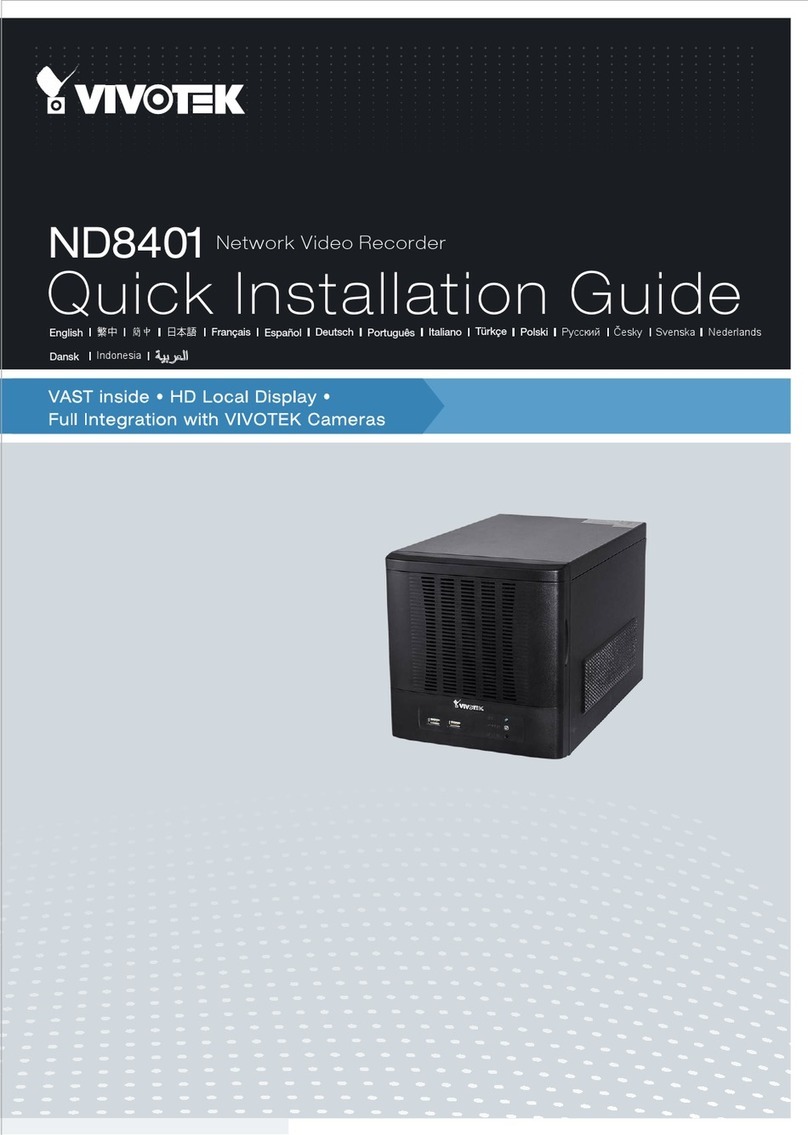
Vivotek
Vivotek ND8401 Quick installation guide

8e6 Technologies
8e6 Technologies Enterprise Filter Authentication R3000 user guide
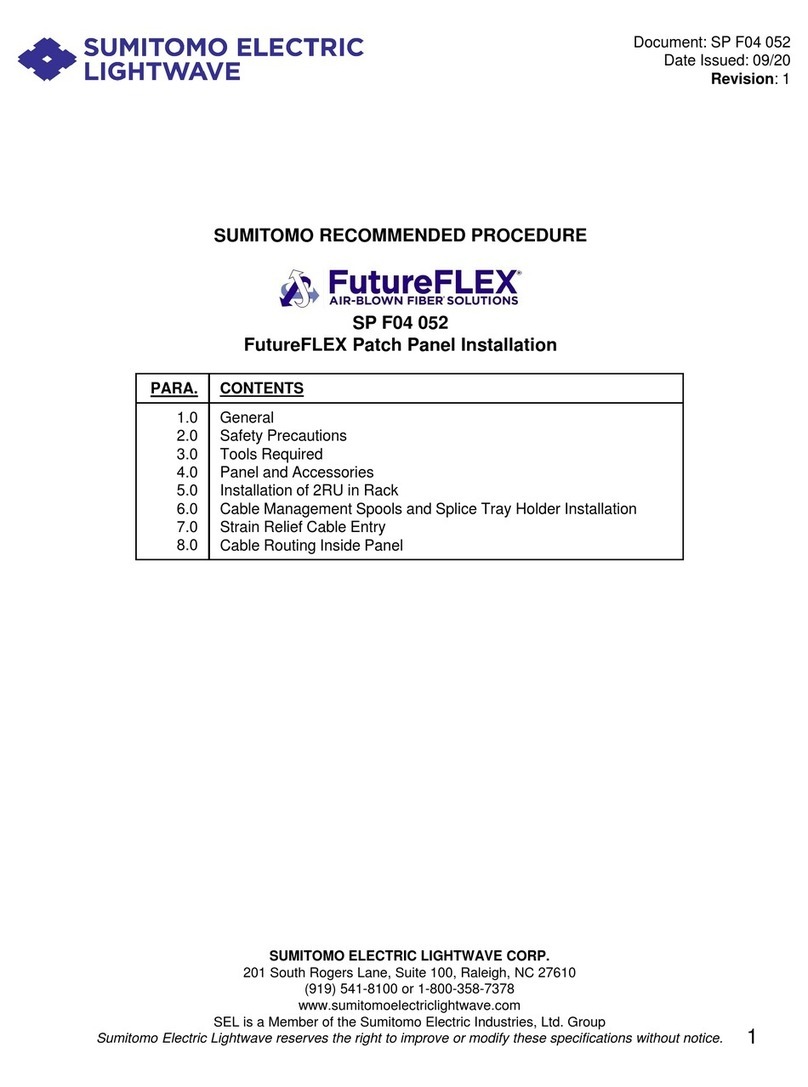
Sumitomo
Sumitomo Electric Lightwave FutureFLEX installation manual

M-system
M-system RGP30 instruction manual

Piera Systems
Piera Systems Canaree I1E quick start guide
